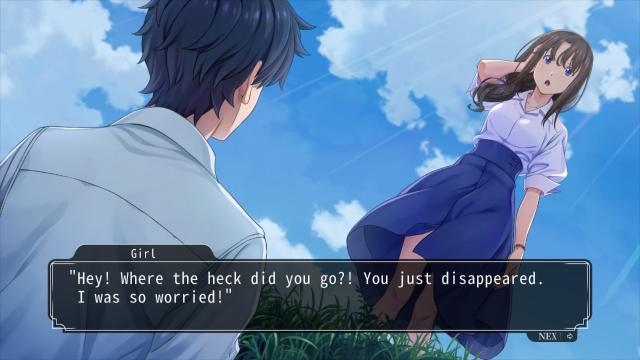The Famicom Detective Club series began with The Missing Heir on the Famicom Disk System way back in 1988, with The Girl Who Stands Behind launching a year later. Neither titles were localised for Western audiences — until this May. After more than three decades, gamers finally got the chance to play through these dense point-and-click mysteries, and while some fans were excited (if a little surprised) by the news, it’s hard to deny bringing the series back was a strange choice from Nintendo.
The Missing Heir and The Girl Who Stands Behind aren’t just simple ports like you’d find on the Switch’s version of the Virtual Console. — they’re games that have been remade from the ground up with new mechanics, dialogue, arts and puzzles. While the original games were fairly simple and mostly used question/answer type gameplay, the newer Famicom Detective Club titles are more robust and require you to explore crime scenes, ask constant questions, revisit suspects and travel across multiple unique landscapes to gather clues.
The whole package is as sleek and shiny as remasters come, and new visuals mean the story shines through a modern lens — but it’s hard not to feel like the games are still incredibly dated.
The original Famicom Detective Club titles are regarded as classics because text-based adventures were still in their infancy in the late 1980s, and they both explored “controversial” topics like murder and drug use that pushed the video games rating system to its limits.
But since the 1980s the murder-mystery genre has thrived, as has the point-and-click genre.
While Famicom Detective Club was a pioneering title, it’s since been eclipsed by deeper stories with more fluid mechanics and more intriguing characters. So while the new releases of Famicom Detective Club look like flash new entries in the detective genre, they’re held back by their links to the past.

The first entry I played, The Girl Who Stands Behind (canonically a prequel to The Missing Heir), is about a schoolgirl who is brutally murdered as she investigates a strange figure known as “The Girl Who Stands Behind”. To solve the dreadful affair, the nameless protagonist must search the crime scene, investigate subjects and find leads to the next part of the investigation, all while battling rumours of ghosts and hauntings.
While certain parts of the game have dynamic exploration mechanics that allow players to search crime scenes with a magnifying glass and find clues, the majority of gameplay requires you to simply talk to suspects and ask them questions via branching dialogue. Unfortunately, it also means the game requires you to sit through a hefty amount of “tell, don’t show” gameplay, which you’ll need to repeat over and over to advance the game.
Most interviews are simple matters of clicking questions and answers until your suspect says something interesting that’ll unlock a new part of the game to explore. Sometimes, this is simple and easy. Other times, you’ll have to solve mini-puzzles in dialogue to find the right solution, like asking a question multiple times until the suspect breaks down.
While shorter conversations can yield interesting clues, much of the dialogue is of the boring, everyday kind. When you’re sitting through hours of conversations, it can start to feel a bit stale.
The Missing Heir, the other title in the Famicom Detective Club bundle, follows this formula to the tee. Ask questions, answer them, find the next suspect to interview. At 6-8 hours, neither title is particularly long, but fans of more modern adventures may find themselves quickly burning out on the game’s repetitive structure.

If you’re looking for action and intrigue, you won’t find it in Famicom Detective Club. They’re a series of games dedicated to an older era, one where games featured slower burn stories, and ones that relied on narrative alone to keep players hooked. While the shiny new mechanics and artwork will make the game more appealing for some, it’s hard to recommend either title if you’re in the mood for a solid murder mystery. Simply, there’s bigger and better titles out there.
As a glimpse into Nintendo’s history and the past of text-based narratives, it’s a very interesting little package, but as an engaging gameplay experience, it’s sadly lacking. The plots of both games are fairly interesting, but the slog to reach a satisfying conclusion will dampen the enthusiasm of most players.
The Famicom Detective Club bundle is for die-hard fans of detective games only — and a strange choice for Nintendo, all things considered.

Leave a Reply